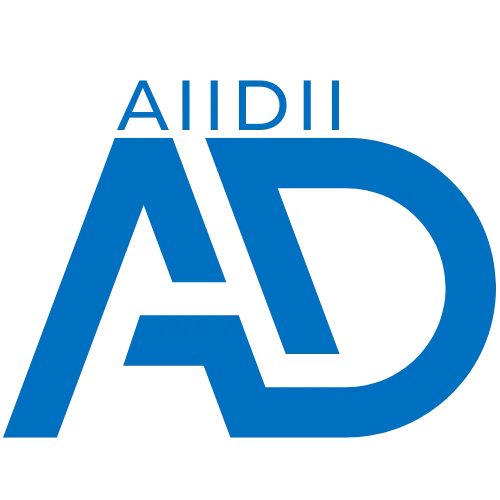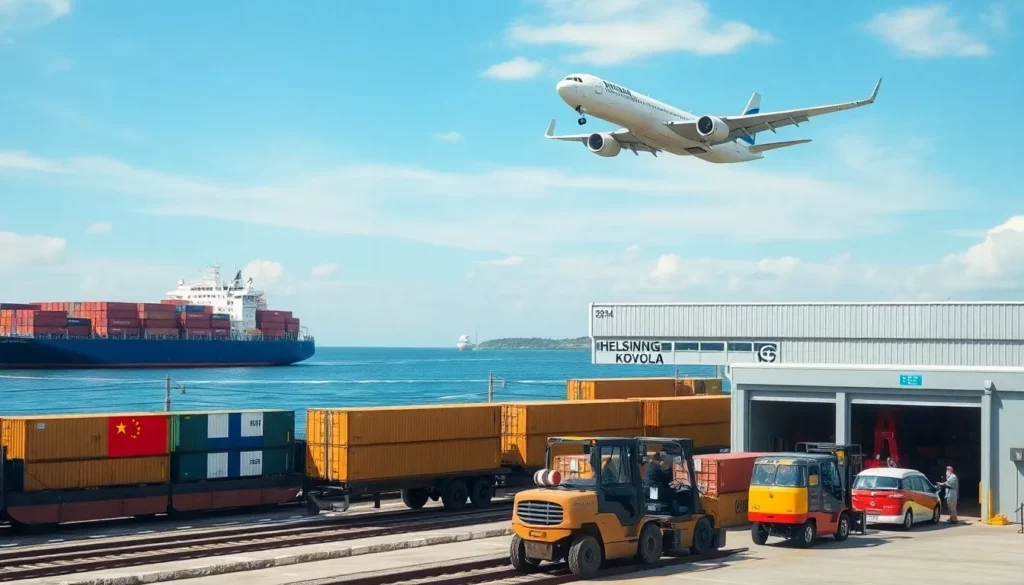As a seasoned logistics professional at AIIDII, I’ve seen how choosing the right freight forwarding service can streamline your imports from China to Finland while cutting costs. This guide equips you with the knowledge to evaluate air, sea, rail, and express shipping options, calculate total landed costs, master customs processes, and select a dependable freight forwarder.
Key takeaways: Partnering with an experienced freight forwarder ensures smooth logistics, from customs clearance to real-time tracking, tailored to your needs.
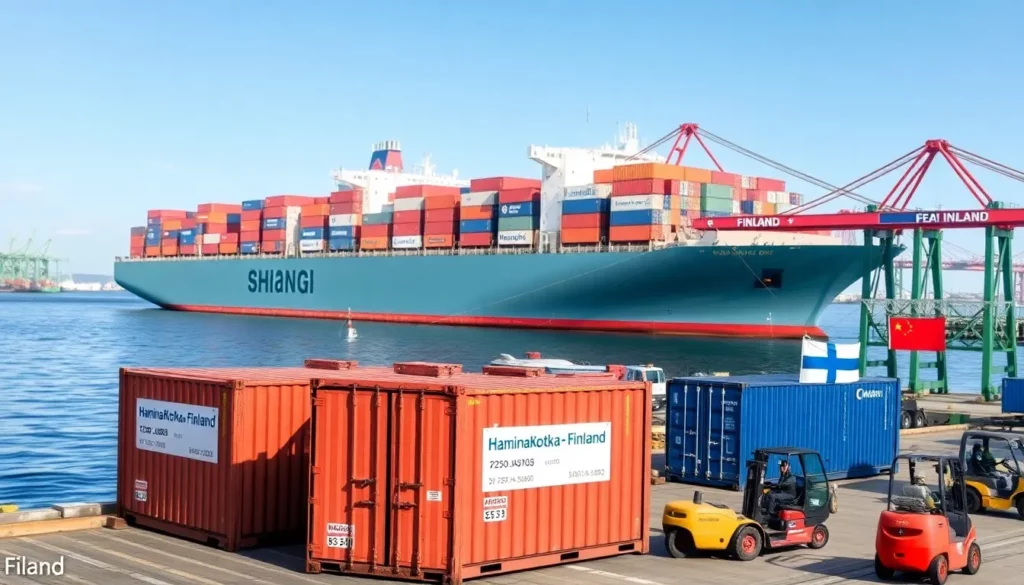
Core Freight Methods: Comparing Your Options
Sea Freight: Cost-Effective for Large Shipments
Sea freight is the go-to choice for bulk shipments from China to Finland, offering unmatched cost savings when time isn’t a priority. It’s ideal for businesses importing large volumes with flexible delivery schedules.
Full Container Load (FCL) Shipping
With FCL, you get exclusive use of a container, ensuring security and cost efficiency for large shipments. For example, shipping a 20-foot container from Shanghai to Helsinki typically costs $2,990–$3,050, while a 40-foot container ranges from $3,800–$4,850.
- Major ports: Shanghai, Shenzhen, and Ningbo connect directly to Helsinki, Finland’s primary container hub.
- Best for: High-volume importers like furniture retailers needing predictable costs.
Less than Container Load (LCL) Shipping
LCL lets you share container space, perfect for smaller shipments. Costs range from $560–$645 per cubic meter for 500kg shipments from key Chinese ports to Finland.
- Advantages: Flexibility for small businesses or startups testing new products.
Example: A Finnish SME importing 500kg of textiles can save significantly by consolidating shipments.
Key Sea Freight Routes and Ports
Shanghai, China’s busiest port, links directly to Helsinki, handling most China-Finland container traffic. HaminaKotka, Finland’s largest port post-2011 merger, excels in containers and bulk cargo. Shenzhen and Ningbo-Zhoushan are also vital hubs for electronics and heavy goods.
- HaminaKotka’s edge: Ideal for importers targeting Northern Europe.
Tip: Confirm port capabilities with your forwarder for oversized or specialized cargo.
Sea Freight Transit Times and Costs
Expect 20–40 days for sea freight, depending on the route. Costs for a 20-foot container range from $3,050–$5,850, excluding fuel surcharges and terminal fees.
Important warning: Plan for extra time during peak seasons to avoid delays.
Cost breakdown:
| Container Size | Average Cost (USD) | Transit Time (Days) |
|---|---|---|
| 20-foot | $3,050–$5,850 | 20–40 |
| 40-foot | $3,800–$4,850 | 20–40 |
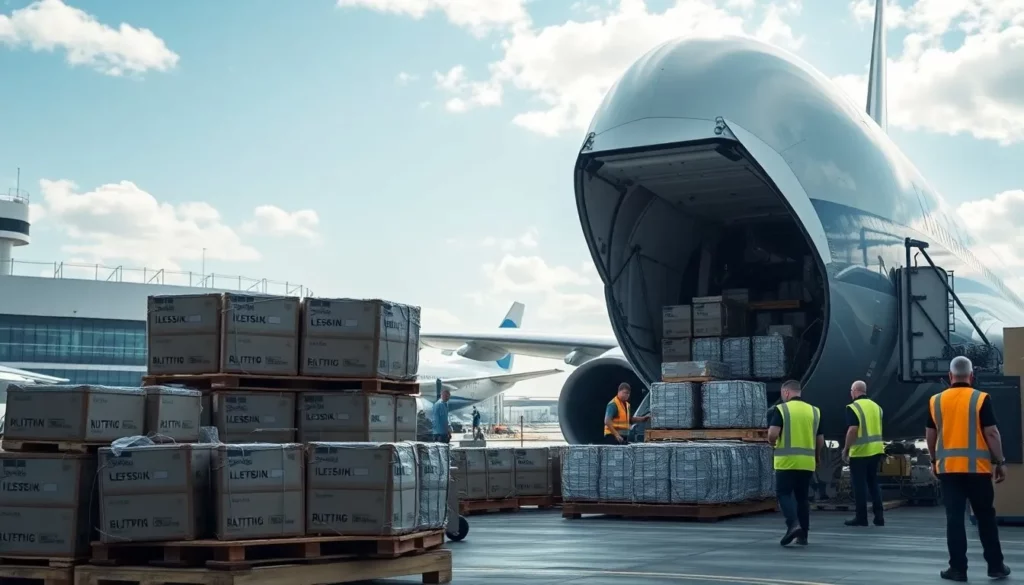
Air Freight: Speed for High-Value Goods
Air freight is your fastest option, ideal for time-sensitive or high-value shipments like electronics. It’s pricier but ensures quick market delivery.
Standard vs. Express Air Cargo
Standard air freight costs about $12.5 per kilogram with 3–7 day transit times. Express services are faster but cost more, suiting urgent needs like spare parts delivery.
- Best practice: Use standard air for regular shipments and express for critical deadlines.
- Scenario: A tech firm rushing 100kg of components to Finland might opt for express to meet a product launch.
Calculating Chargeable Weight
Airlines charge based on the higher of actual or volumetric weight (length × width × height in cm ÷ 6,000). Optimize packaging to minimize costs.
Example: A bulky 50kg shipment with a volume of 0.5m³ may be charged as 83kg volumetrically.
Tip: Use dense packaging for heavy goods to avoid volumetric penalties.
Major Air Freight Hubs
Beijing, Shanghai, and Guangzhou are China’s key air cargo hubs, while Helsinki-Vantaa Airport handles most of Finland’s air imports with efficient customs processing.
- Helsinki-Vantaa’s strength: Fast clearance and Nordic distribution.
Best practice: Choose direct flights to minimize transit time.
Air Freight Transit Times and Costs
Air shipments take 3–10 days, with costs averaging €5 per kilogram. Rates vary with fuel prices and demand.
Cost breakdown:
| Service Type | Cost per kg (EUR) | Transit Time (Days) |
|---|---|---|
| Standard | ~€5 | 3–7 |
| Express | Higher | 1–3 |
Important warning: Peak seasons can spike costs—budget accordingly.
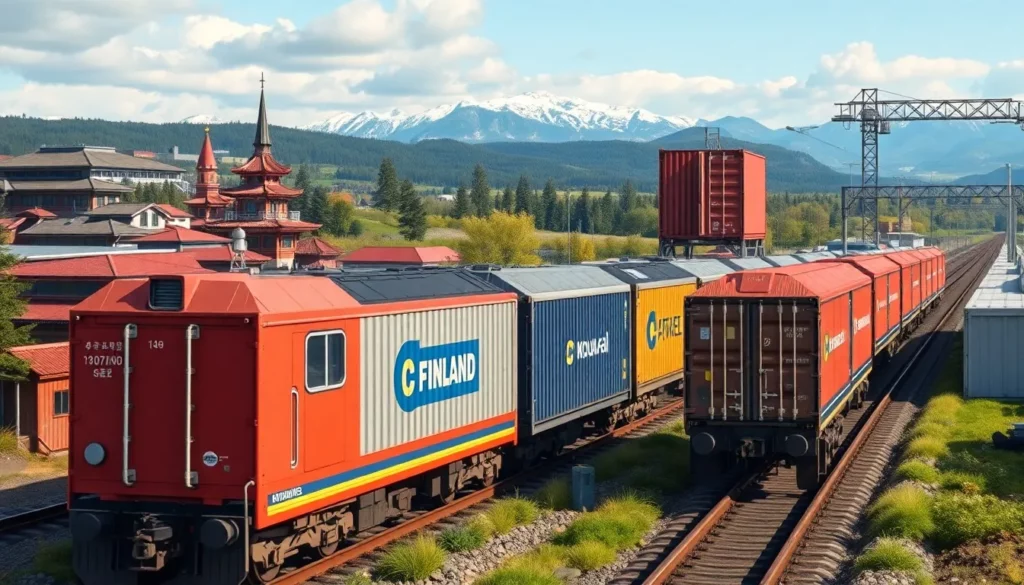
Rail Freight: The Balanced Choice
Rail freight offers a cost-effective, faster alternative to sea shipping, leveraging China’s Belt and Road Initiative for reliable China-Finland transport.
The China-Europe Rail Network
The China-Europe Railway Express connects 56 Chinese cities to 49 European destinations, moving $420 billion in goods annually. Finland-specific routes, like Kouvola-Xi’an, deliver in 12–18 days.
- Growth stat: Rail trips surged from 1,702 in 2016 to over 17,000 by 2024.
- Environmental perk: Lower carbon footprint than air freight.
Rail vs. Sea and Air
Rail costs about one-fifth of air freight and takes one-quarter the time of sea freight. A 20-foot container costs around $3,900, a 40-foot $6,800.
Comparison table:
| Mode | Cost per 20-ft (USD) | Transit Time (Days) | Reliability |
|---|---|---|---|
| Sea | $3,050–$5,850 | 20–40 | Moderate |
| Rail | ~$3,900 | 12–18 | High |
| Air | ~$12.5/kg | 3–7 | High |
Best for: Medium-volume shipments like automotive parts.
Key Rail Terminals
Kouvola is Finland’s primary rail hub, offering customs clearance and Nordic distribution. Routes often pass through Russia and Eastern Europe.
Tip: Verify terminal capabilities for temperature-controlled cargo.
Cargo Suitability
Rail excels for electronics, consumer goods, and climate-controlled products needing faster delivery than sea freight allows.
Example: A Finnish retailer importing 2,000kg of clothing might choose rail for balanced cost and speed.
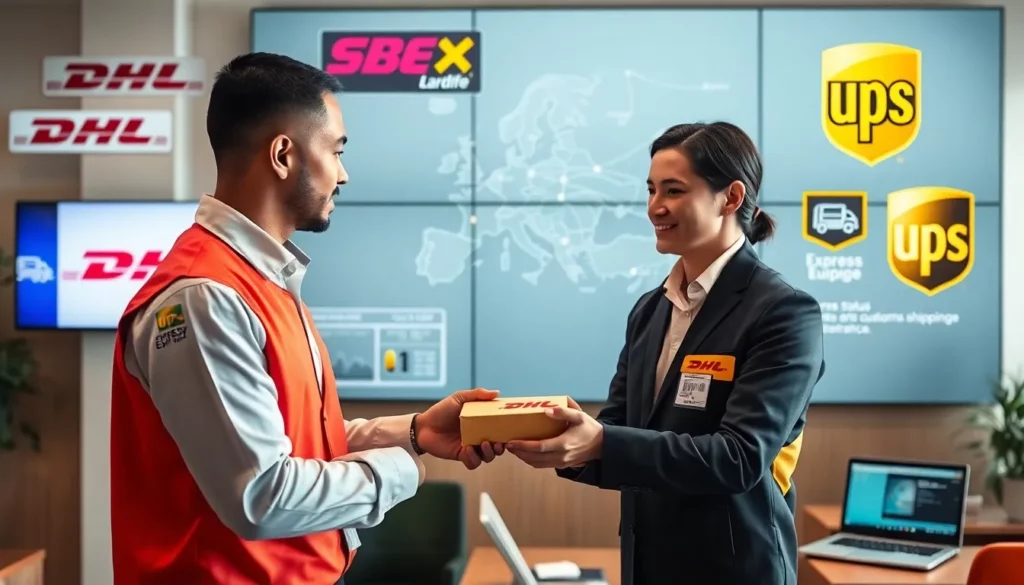
Express Courier Services: Fast for Small Shipments
Express services like DHL, FedEx, and UPS are perfect for small parcels, samples, or urgent documents, delivering in 3–10 days.
Comparing Express Providers
DHL leads in China-Europe express shipping, with FedEx and UPS offering similar reliability. Costs range from $160–$320 for 5kg shipments.
- Best practice: Compare provider rates for your specific route and weight.
- Service perks: Door-to-door tracking and customs handling.
When to Choose Express
Use express for high-value samples or urgent documents when speed outweighs cost. Traditional freight is better for routine shipments.
- Scenario: A Finnish startup sending 2kg of prototype parts might use DHL for a trade show deadline.
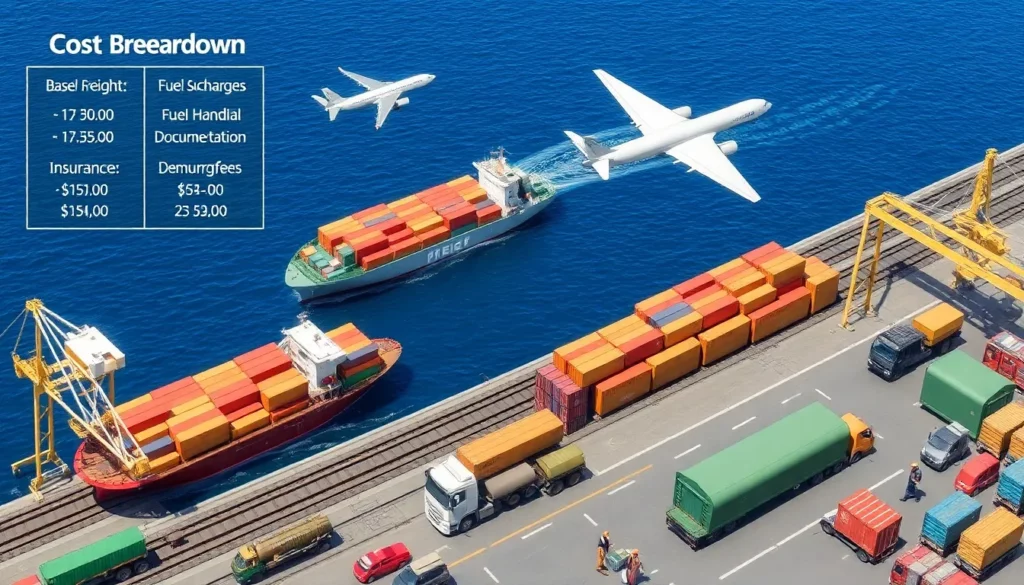
Calculating Total Landed Costs
Understanding Freight Quotes
A freight forwarder’s quote includes more than just the base rate. Break down all components to avoid surprises.
Base Freight Rates
Sea freight offers the lowest rates, followed by rail, with air being the most expensive. Rates vary with demand and fuel costs.
Tip: Request quotes from multiple forwarders for competitive pricing.
Fuel Surcharges
Bunker Adjustment Factor (BAF) for sea and Fuel Adjustment Factor (FAF) for air add 10–20% to costs, fluctuating with fuel prices.
Important warning: Monitor fuel price trends to budget accurately.
Terminal Handling Charges (THC)
THC covers port handling, ranging from $100–$300 per container at origin and destination.
Cost breakdown:
| Charge Type | Cost Range (USD) | Applies To |
|---|---|---|
| Origin THC | $100–$300 | Export |
| Dest. THC | $100–$300 | Import |
Documentation and Customs Fees
Expect $50–$200 for documentation and customs clearance. Complex shipments may incur higher fees.
Best practice: Clarify documentation needs upfront to avoid delays.
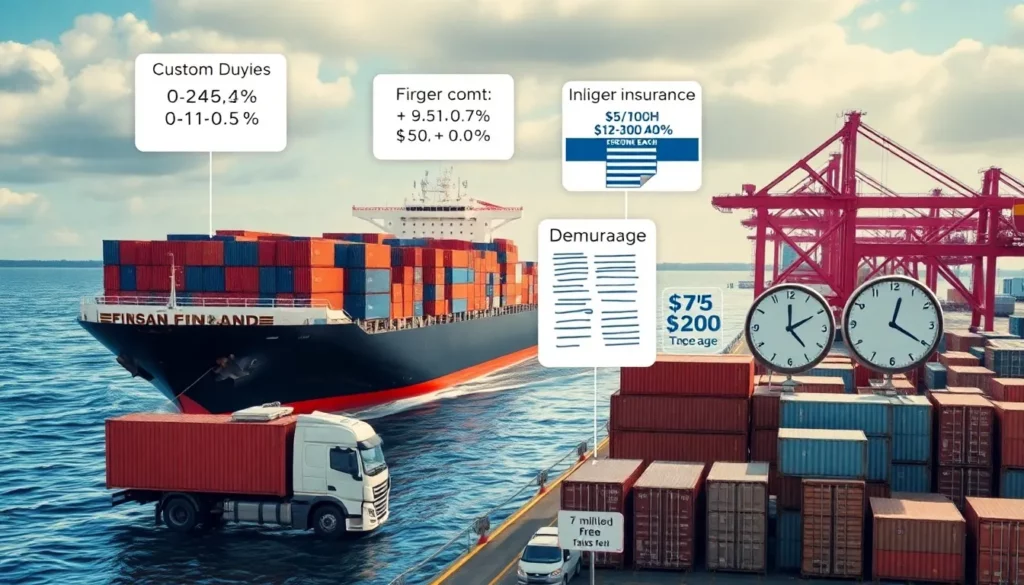
Hidden Costs to Watch
Beyond the quote, additional costs impact your budget. Account for these to ensure accurate planning.
Finnish Customs Duties and VAT
Duties range from 0–25% based on product type, with 24% VAT applied to the total value (goods + freight + insurance + duties).
Example: A $10,000 shipment with $2,000 freight and 5% duty incurs $2,880 in VAT.
Tip: Use Finland’s Fintaric database for precise duty rates.
Cargo Insurance
Insurance costs 0.1–0.5% of shipment value, protecting against loss or damage.
Best practice: Opt for all-risk coverage for high-value goods.
Inland Transportation
First-mile (China factory to port) and last-mile (Finnish port to destination) costs range from $50–$200 each.
Important warning: Door-to-door quotes include these; port-to-port quotes don’t.
Demurrage and Storage Fees
Demurrage ($75–$300/day) applies if containers exceed free time (5–7 days). Detention fees hit for late container returns.
Best practice: Plan efficient unloading to avoid these charges.
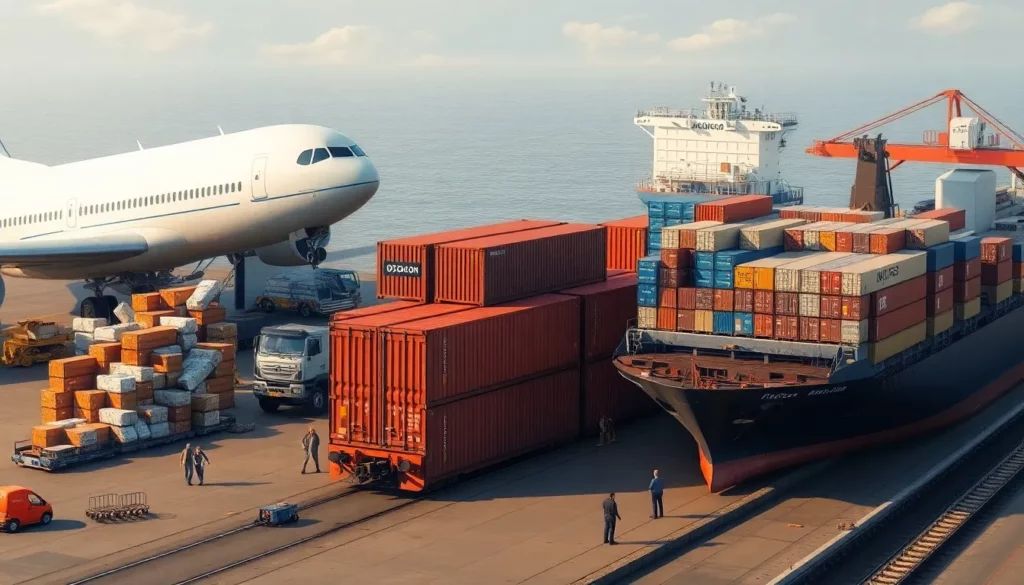
Choosing the Most Economical Option
Cost-per-Kilogram Analysis
Compare modes based on weight:
- Air: $12.5/kg (best for <100kg, urgent).
- Rail: $6–8/kg (medium volumes, 500–5,000kg).
- Sea: Lowest per-kg cost (>100kg, non-urgent).
Volume and Weight Impact
Large shipments favor sea freight; small, urgent ones suit air. Rail is ideal for mid-sized loads.
Case study:
| Business Type | Shipment | Air Cost | Rail Cost | Sea Cost | Best Choice |
|---|---|---|---|---|---|
| SME | 500kg electronics | $6,250 | $1,800 | $1,200 | Air (speed) |
| Retailer | 20,000kg furniture | $250,000 | $140,000 | $80,000 | Sea (cost) |
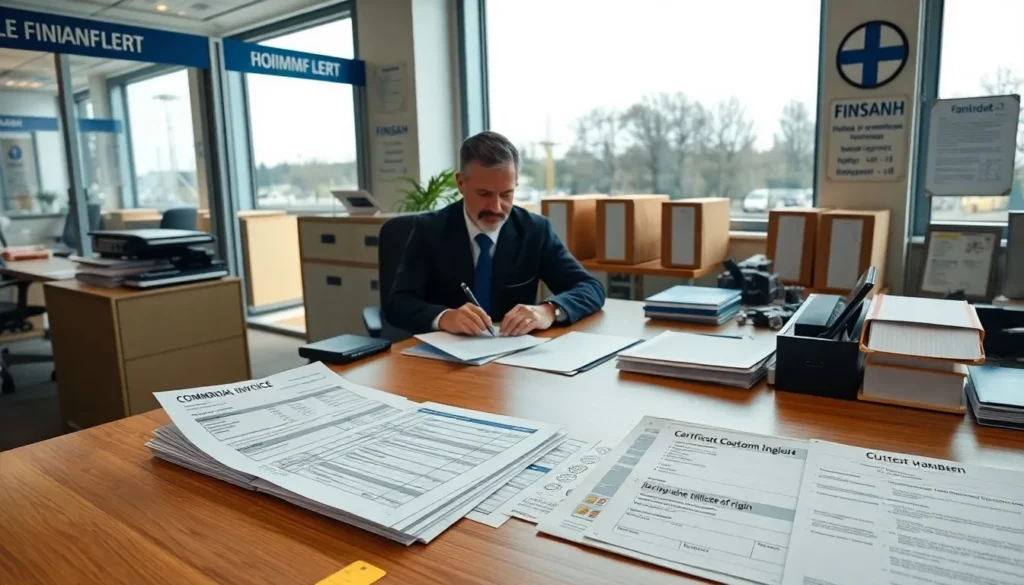
Navigating Finnish Customs
Essential Documentation
Proper paperwork ensures smooth customs clearance. Missing documents can halt your shipment.
Commercial Invoice
- Include seller/buyer details, HS codes, quantities, and values in English or Finnish.
Best practice: Double-check HS codes to avoid classification errors.
Packing List
- Detail package contents, weights, and dimensions to aid inspections.
Tip: Include package markings for easy identification.
Bill of Lading or Air Waybill
- Bills of lading (sea) are negotiable; air waybills (air) are not but detail shipment terms.
Important warning: Verify document accuracy before cargo departs.
Certificate of Origin
- Proves manufacturing location, potentially reducing duties under trade agreements.
Example: A certificate may lower duties for Finnish electronics imports.
EORI Number
- Your EORI number (format: FI + business ID) is mandatory for EU customs clearance.
Important warning: Without it, customs will reject your shipment.
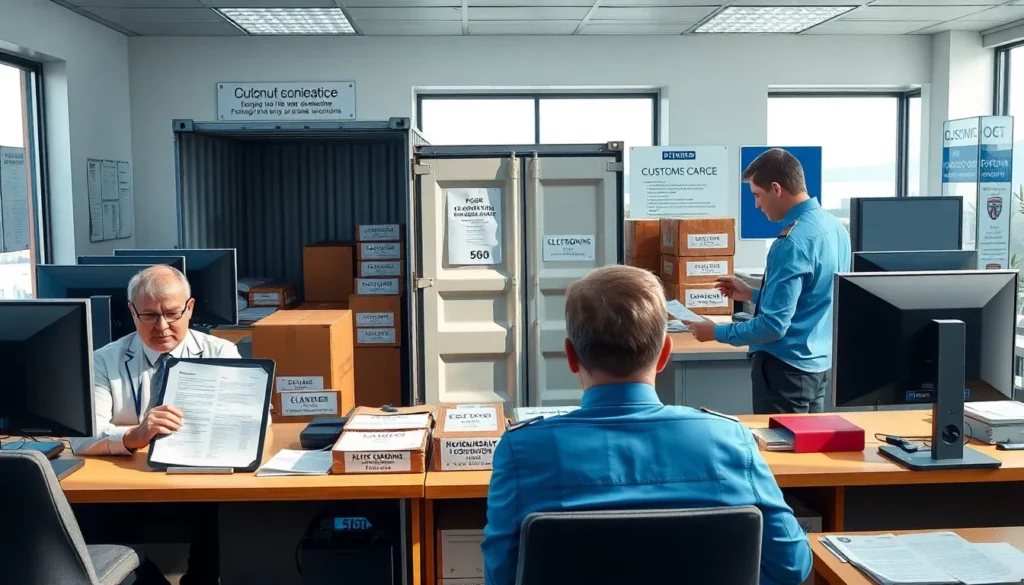
Finnish Customs Procedures
Finland’s Tulli system is efficient but strict. Understanding it prevents delays.
Customs Brokers
- Brokers handle declarations and compliance, optimizing duty payments.
Best practice: Hire a licensed broker for complex shipments.
Declaration Process
- Submit electronic declarations before cargo arrives. Clearance takes 24–48 hours, unless inspections are needed.
Tip: Pre-submit documents to speed up processing.
Common Delay Causes
- Incomplete documents, missing EORI numbers, or restricted goods cause most delays.
Best practice: Research restricted items like food or electronics in advance.
Restricted Goods
Finland enforces strict rules on certain products.
- Checklist:
- Weapons/ammunition: Need police licenses.
- Food/medicines: Require EU health certificates.
- Plants/animals: Need phytosanitary/veterinary approvals.
- Specifics:
- Electronics: Must have CE marking.
- Textiles: Need fiber content labels.
- Foodstuffs: Require ingredient and health certifications.
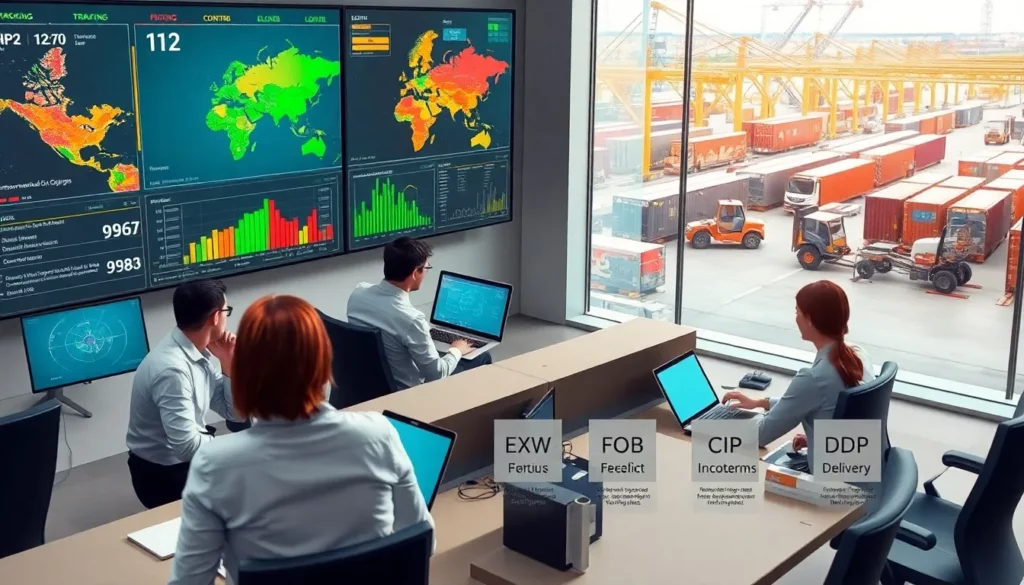
Optimizing Your Logistics Strategy
Choosing Incoterms
Incoterms clarify who handles costs and risks. Your choice impacts total costs.
EXW, FOB, CIF, DDP Explained
- EXW: You manage all logistics from the supplier’s premises.
- FOB: Seller handles export; you manage ocean freight.
- CIF: Seller covers freight and insurance to port.
- DDP: Seller manages everything to your door.
Cost/Risk impact:
| Incoterm | Seller Responsibility | Buyer Responsibility | Best for |
|---|---|---|---|
| EXW | Minimal | All logistics | Large importers |
| FOB | Export clearance | Freight/import | Experienced importers |
| CIF | Freight/insurance | Import clearance | Balanced control |
| DDP | All logistics | None | New importers |
Best practice: Choose DDP for simplicity if you’re new to importing.
Cargo Insurance
Insurance protects against loss or damage, costing 0.1–0.5% of shipment value.
- Coverage types:
- All-risk: Covers most external damages.
- Named perils: Limited to specific risks.
- Warehouse-to-warehouse: Full journey protection.
Tip: Calculate coverage as CIF + 10% to include profit loss.
- Claims process:
- Document damage immediately.
- Notify insurer within 24–48 hours.
- Submit invoices, photos, and transport documents.
Real-Time Tracking
Modern forwarders offer GPS tracking, environmental monitoring, and mobile apps.
Best practice: Integrate tracking with your ERP for seamless updates.
Example: A Finnish importer tracking a rail shipment can adjust inventory based on real-time ETA updates.
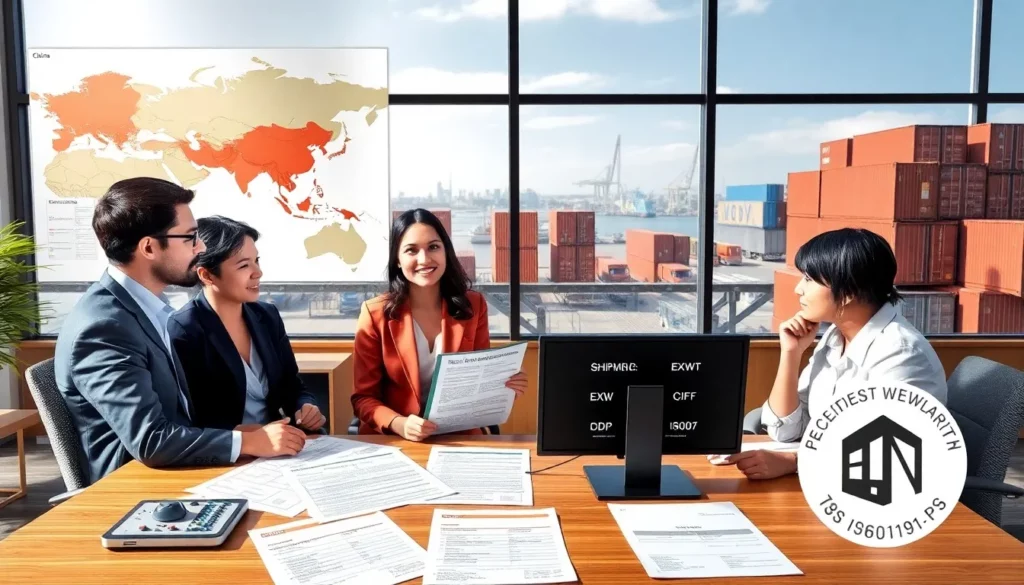
Selecting a Freight Forwarder
Evaluation Criteria
Your forwarder’s expertise shapes your logistics success. Assess these factors:
- Experience: Proven China-Finland track record with client references.
- Network: Strong carrier and customs relationships in both countries.
- Certifications: FIATA membership, ISO 9001, valid licenses.
- Transparency: Clear pricing and communication protocols.
Best practice: Request case studies for similar shipments.
Due Diligence Checklist
- Quotes: Provide detailed shipment specs and compare EXW, FOB, CIF, DDP.
- References: Check reviews and B2B case studies for reliability.
- Capabilities: Confirm customs brokerage and door-to-door services.
Tip: Verify forwarder’s local presence in China and Finland.
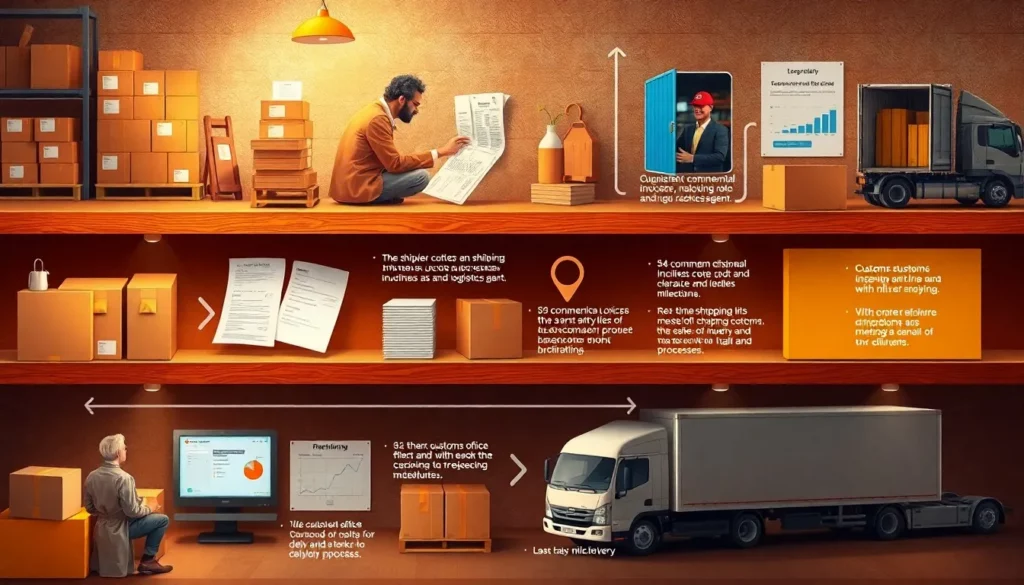
Step-by-Step Shipping Guide
Step 1: Prepare Your Cargo
- Confirm supplier timelines and quality checks.
- Ensure robust packaging and accurate weights.
- Provide clear shipping marks and instructions.
Step 2: Request Quotes
- Share full shipment details (weight, dimensions, timing).
- Compare quotes across Incoterms.
- Request all-inclusive cost breakdowns.
Step 3: Book Your Shipment
- Choose the best mode based on cost, speed, and reliability.
- Sign a clear service agreement.
- Confirm schedules and ETAs.
Step 4: Submit Documents
- Verify commercial invoice and packing list accuracy.
- Submit all documents (e.g., certificates, waybills) early.
- Approve transport document drafts.
Step 5: Coordinate Export
- Arrange factory pickup with your forwarder.
- Monitor export clearance in China.
- Confirm cargo loading details.
Step 6: Track Your Shipment
- Use tracking numbers for real-time updates.
- Set up milestone notifications.
- Stay in touch with your forwarder.
Step 7: Clear Finnish Customs
- Prepare for arrival with EORI and documents.
- Submit declarations and pay duties/VAT.
- Confirm clearance before delivery.
Step 8: Arrange Final Delivery
- Schedule last-mile delivery.
- Inspect cargo for damage before signing.
- Settle all invoices promptly.
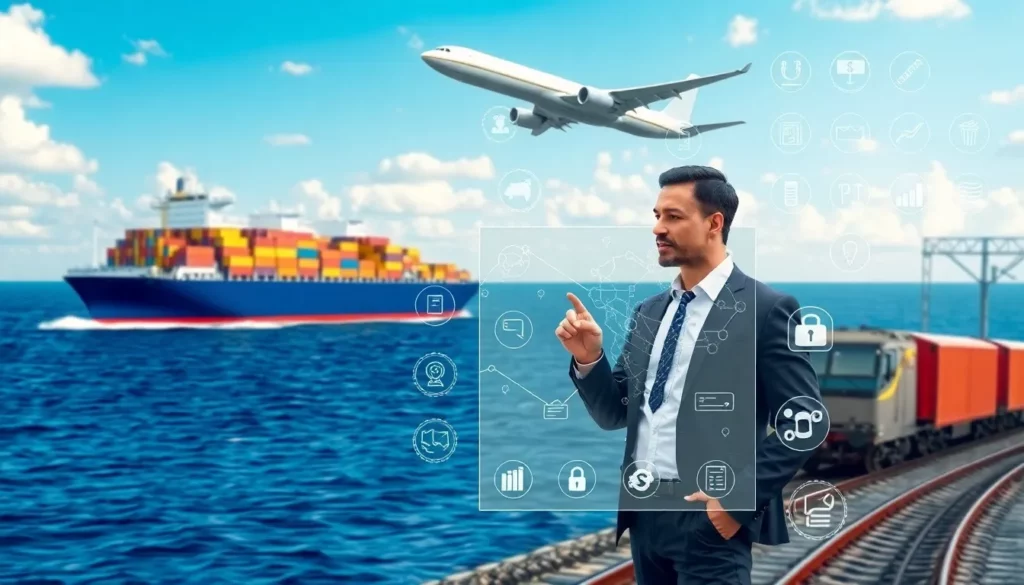
Conclusion:
Balance cost, speed, and security when choosing between sea, air, or rail. Partner with an expert forwarder to streamline customs, tracking, and delivery. Contact a logistics professional to tailor a solution for your business.
Frequently Asked Questions (FAQs)
1. What’s the biggest factor in choosing sea vs. air freight?
Weigh transit time against cost. Sea freight saves 60–80% but takes 20–40 days; air freight delivers in 3–7 days but costs $12.5/kg.
2. Why is an EORI number mandatory?
It’s your EU customs ID. Without it, Finnish customs will block your shipment.
3. Which Incoterm suits first-time importers?
DDP minimizes complexity by having the seller handle all logistics and costs.
4. How do I estimate duties and VAT?
Use Fintaric for duty rates (0–25%) and calculate 24% VAT on goods + freight + insurance + duties.
5. How can I avoid shipping delays?
Ensure accurate documentation, secure permits early, and work with an experienced forwarder familiar with Finnish regulations.
